8 Ways for Brands to Prep for Amazon Prime Day 2021
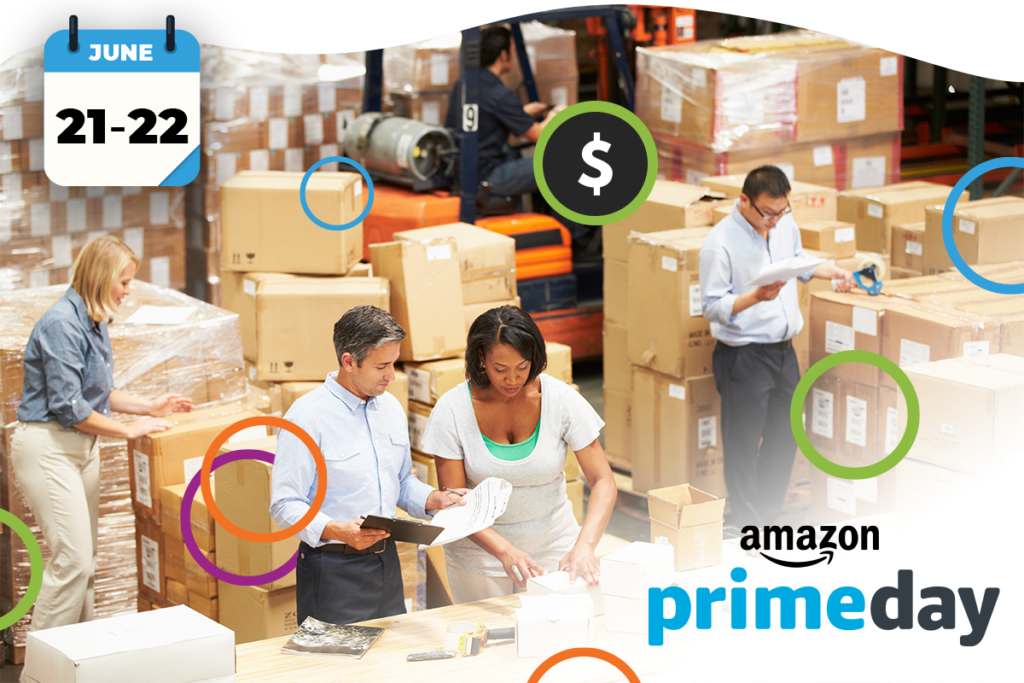
Amazon Prime Day, one of the most anticipated shopping events of the year, is just a week away. This year’s event will be held June 21-22, a month earlier than usual. So if you’re a brand that sells on Amazon, it’s time to focus on what you can do to make this year’s event a big success for your business.
Read on to learn why Prime Day matters — and eight actions you can take in the next week to set yourself up for Prime Day success.
Why Prime Day 2021 Matters to Brands
In the midst of the COVID-19 pandemic, eCommerce has experienced explosive growth. Per an analysis from Digital Commerce 360, in 2020, consumers spent $861.12 billion online with U.S. retailers. That’s a 44% increase from the previous year.
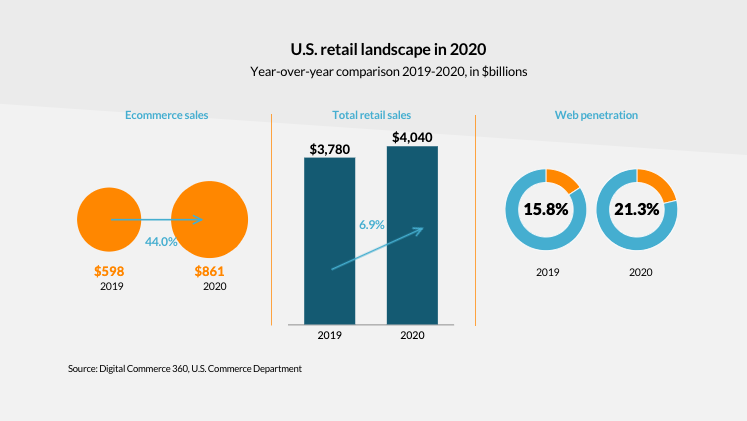
Amazon has hugely benefited from eCommerce growth, both in terms of traffic and sales. And one of Amazon’s biggest gains happened in October, during their last Prime Day event. According to Digital Commerce 360, total visits to Amazon jumped 27% in October 2020, compared to the same month of the previous year. And per a press release from Amazon, third-party sellers surpassed $3.5 billion in sales on Prime Day, which was a 60% year-over-year increase.
Prime Day 2021 is expected to be another lucrative event. In fact, it’s estimated that 67.7 million people — or 26% of American adults — will shop on Prime Day 2021.
Get Your Brand Ready for Prime Day Success
By now, you’ve likely determined the products you’ll feature on Prime Day and the tools you’ll use to offer savings — including Amazon coupons and Lightning deals. And hopefully, you’ve shipped your inventory to ensure it reaches Amazon fulfillment centers by the appropriate deadlines — which have already passed.
But there’s still time to position yourself for a lucrative Prime Day. In fact, there are 8 actions you can take in the coming week to prepare your brand for Prime Day success.
1. Offer Additional Ways to Save
The deadlines for submitting Amazon Coupons for Prime Day, as well as Lightning Deals, have already passed. If you missed the boat, you still have the opportunity to manually adjust prices for the products you choose. But remember: customers won’t be able to see that you reduced the price for Prime Day.
Another important thing to remember is that even if you don’t run any Prime Day deals, you might still see an uptick in sales. That’s because there will be more visitors to the site on June 21-22. And of course, more visitors can lead to more sales!
2. Spruce Up Your Amazon Store
When a consumer enters a brick-and-mortar store, the layout and condition of the store impact what they purchase — or if they even make a purchase at all. If the store is messy and the shopper can’t find what they need, they’re likely to leave empty handed.
Today, Amazon offers Stores to all sellers enrolled in Brand Registry — at no cost. Essentially, it’s a branded “storefront,” allowing customers to learn more about your brand and your offerings. It’s important to make a great first impression!
Here’s an example of a Store for La Colombe Coffee Roasters. There’s a large, branded hero image at the top. And visitors can easily navigate through the brand’s offerings by using the menu.
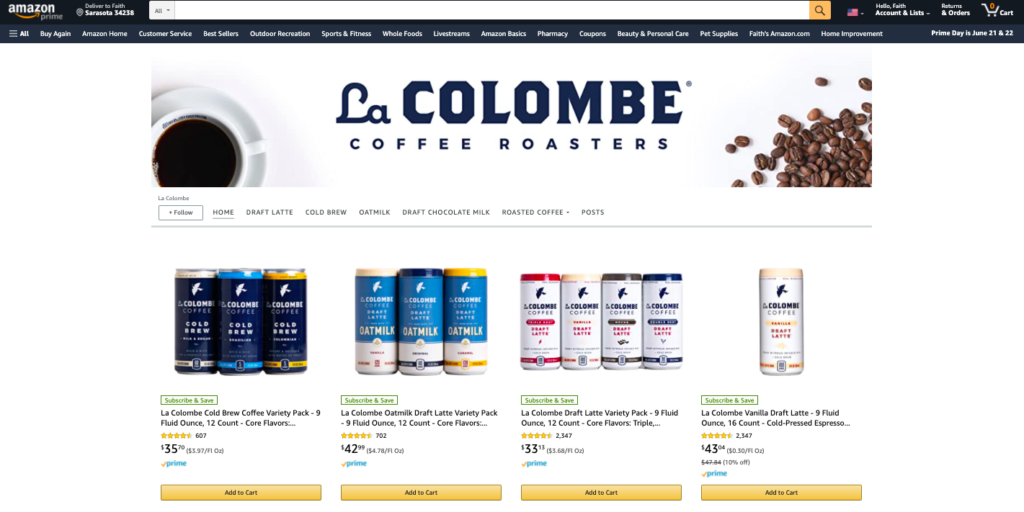
Brands can also include relevant videos, images, information and experiences throughout their store. For example, Starbucks features their “Starbucks Coffee Quiz,” which helps visitors determine which coffee is right for them.
If a visitor lands on your Store on Prime Day (or any day, really) and encounters a messy experience that’s hard to navigate, they probably won’t stick around to make a purchase. So make sure your Store is in great shape. It should reflect the look and feel of your brand — and make it easy for customers to find the products and information they’re looking for.
3. Dust Off Your Product Listings
According to an infographic from Invesp, at least 30% of all products purchased online are returned — compared to a 8.89% return rate for products purchased in-store. Yikes.
Of course, you want people to purchase your products on Prime Day. But you also want them to keep the items once they arrive.
In the days leading up to Prime Day, review your product listings to ensure they’re detailed and accurate. Your existing reviews and Q&A can help you identify opportunities to enhance your listings. For example, you might notice several negative reviews for a product that express disappointment that batteries aren’t included. This is an opportunity to rework your product description to make it clear what is and isn’t included.
Comprehensive, keyword-rich descriptions will ensure shoppers can find the products that best fit their needs on Prime Day. Plus, accurate descriptions will set realistic expectations for your shoppers. That means shoppers will know exactly what to expect when their Prime Day finds arrive in the mail, and they’ll be less likely to return their items.
4. Review Your Imagery
Consumers depend on great photos to make informed purchase decisions when shopping online. In fact, 83% of smartphone users say that product photos are “very” or “extremely” influential.
The more images, the better. According to an eMarketer article leveraging Salsify data, consumers expect to find between five and eight images for a product on an eCommerce site.
Be sure you have plenty of great photos that showcase your products in the best light. If you’re looking for ways to quickly get more imagery up for the products you’re featuring for Prime Day, consider highlighting photos your customers have shared of your products in “real life.” Here’s an example of a brand that created a collage of user-submitted photos.
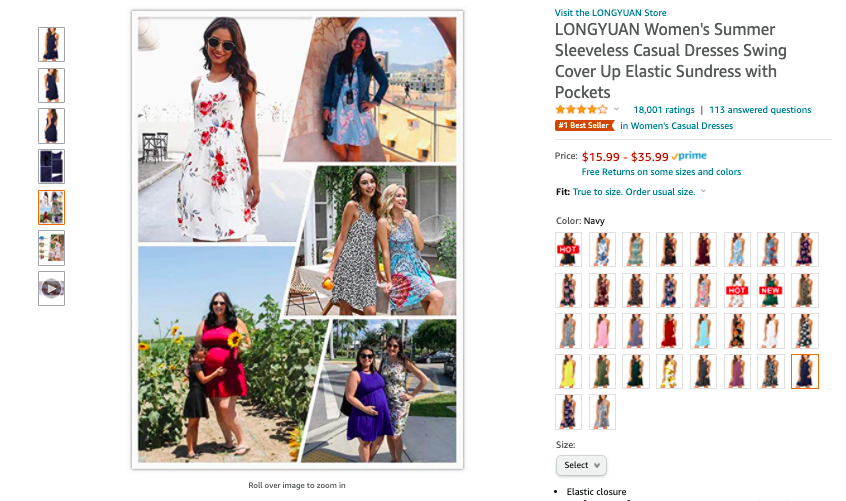
Or, consider showcasing a product’s great average star rating or a glowing review. For example, the image carousel on the product page for Supergoop! CC Screen features the text of a five star review from an Amazon customer, raving about the product.
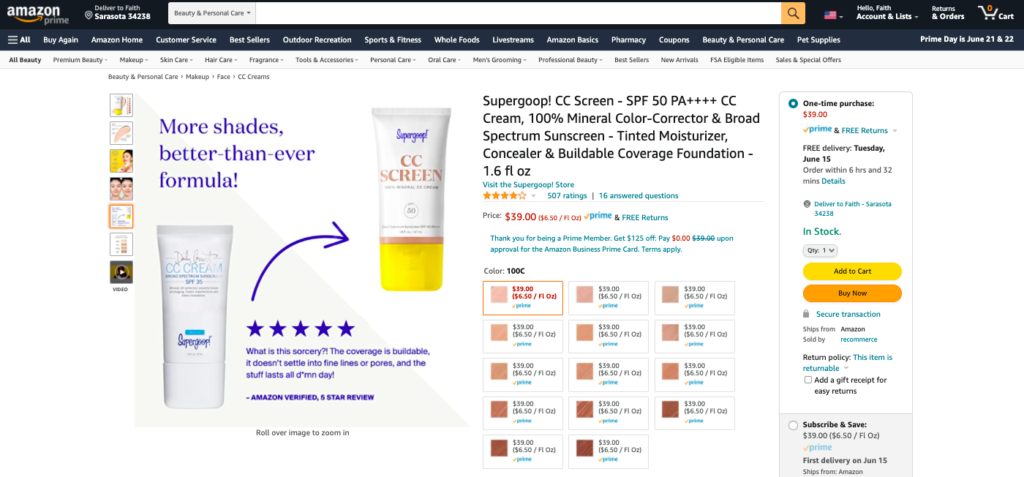
5. Prepare to Respond Quickly to Customer Q&As
All product pages on Amazon include a Customer Questions & Answers feature. This feature allows shoppers to submit any questions that stand in the way of them making a purchase. Questions can be answered by sellers, manufacturers or even other customers.
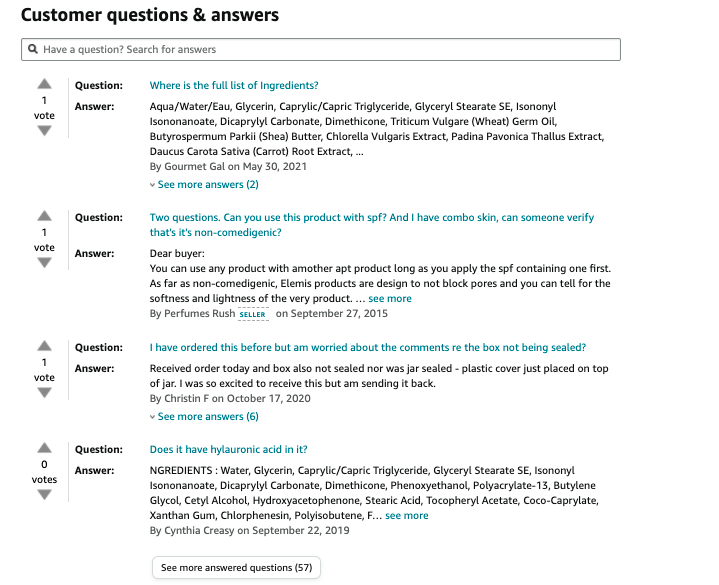
If you don’t answer customer questions, you’re leaving money on the table. According to our friends at Bazaarvoice, brands and retailers that respond to customer Q&A see a 98% average conversion lift.
And time is of the essence — especially on Prime Day. If a customer doesn’t get a quick answer, they’re likely to ditch your Prime Day deal for a different one. So be sure you have a plan in place to provide quick answers to questions that customers submit on Prime Day. Ideally, customers should receive answers before they’ve even had a chance to leave the product page!
6. Leverage Amazon Advertising
Once you’ve determined your Prime Day offerings, it’s important to have a plan in place to generate traffic to these pages. After all, it’s pointless to offer Prime Deal deals if no one knows about them!
One way to create buzz and drive more traffic to your pages is through Amazon Advertising. In fact, Amazon offers a ton of different options that can help you achieve your goals — both on and off Amazon. You can learn more about Amazon Advertising in this recent blog.
If you’ve already got Amazon ads running, consider adjusting your budget. Bidding is a lot more competitive during Prime Day so chances are, you’ll have to spend more to reach your audience.
Finally, consider including the star rating for a product in your Amazon ads. Including reviews in ads is a great way to capture the attention of Prime Day visitors by leveraging social proof. For example, this product page displays an ad for a children’s toy — and it includes the average star rating and review count for the product.
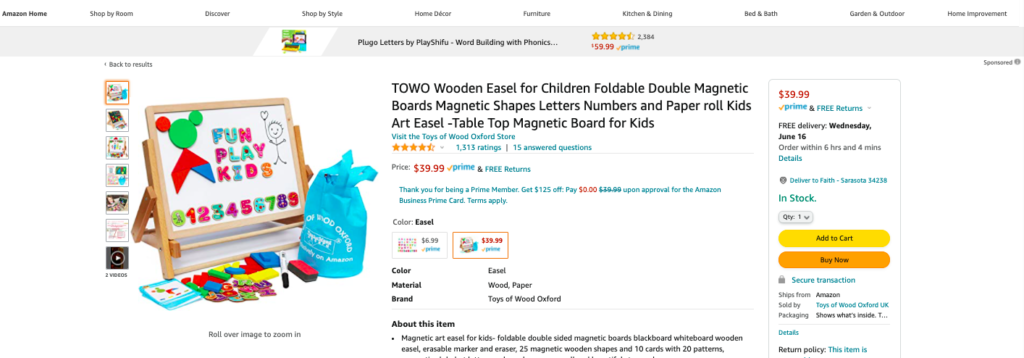
This display ad for a Samsung Way also includes the average star rating and review count.

7. Promote Your Deals on Social Media
Another great way to generate more traffic on Prime Day is to promote your deals on social media. After all, social media sites and apps are some of the most visited online destinations!
Be sure to include #AmazonPrimeDay to reach even more shoppers looking for great deals.
8. Measure Your Results and Optimize Accordingly
Once Prime Day is over, be sure to take a good, honest look at your results. Determine what worked well, and what didn’t. You can use those insights to improve your strategy when the next Prime Day rolls around.
Nail Down Your Brand’s Last-Minute Plans for Prime Day 2021
Amazon Prime Day 2021 is expected to be one of the biggest shopping days of the year. While this is an event that brands prepare months for, there are still some impactful actions you can take in the week leading up to Prime Day to position yourself for a profitable event.